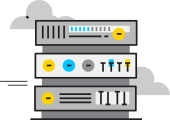Introduction
In the realm of database management, referential integrity stands as a crucial concept that underpins the integrity and reliability of interconnected data. It acts as a guardian of data consistency and accuracy, preventing anomalies and maintaining the quality of relationships between various entities within a database. This article delves into the depths of referential integrity, tracing its historical roots, explicating its inner workings, exploring its various types, applications, and challenges, and even envisioning its future implications.
Historical Origins and Early Mentions
Referential integrity, in its essence, emerged as a response to the need for maintaining the coherence of data in relational databases. Its origins can be traced back to the pioneering work in the field of relational database management by Dr. E.F. Codd in the early 1970s. Dr. Codd’s groundbreaking paper “A Relational Model of Data for Large Shared Data Banks” laid the theoretical foundation for what would eventually become referential integrity. The concept gained further prominence with the rise of structured query languages like SQL (Structured Query Language), where referential integrity constraints could be enforced.
Exploring Referential Integrity
Referential integrity, at its core, revolves around the notion that relationships between data entities within a database must remain consistent. It ensures that relationships between tables maintain accuracy and are not compromised by accidental deletions, updates, or insertions. The primary mechanism through which referential integrity is maintained is through the use of foreign key constraints. These constraints establish a connection between two tables, where the foreign key in one table references the primary key in another.
The Inner Workings of Referential Integrity
Referential integrity is enforced through a set of rules and constraints that prevent actions that would compromise data integrity. These rules include:
- Cascade Delete: When a record in the parent table is deleted, all related records in the child table are automatically deleted.
- Cascade Update: When a primary key value is updated in the parent table, the corresponding foreign key values in the child table are updated as well.
- Set Null: When a record in the parent table is deleted, the foreign key values in the child table are set to NULL.
- No Action: Prevents the deletion of a parent record if related child records exist.
Key Features of Referential Integrity
- Data Consistency: Ensures that relationships between data entities remain accurate and reliable.
- Prevents Orphaned Records: Prevents the creation of orphaned records, where a foreign key points to a non-existent primary key.
- Automated Maintenance: Simplifies the process of maintaining data integrity by automatically enforcing rules.
Types of Referential Integrity
| Type | Description |
|---|---|
| Strong Integrity | Ensures all foreign keys have valid primary key references. |
| Weak Integrity | Allows NULL values in foreign keys, still ensuring valid references for non-NULL values. |
| Semantic Integrity | Involves domain-specific constraints, ensuring data makes logical sense within its context. |
Applications, Challenges, and Solutions
Referential integrity finds applications in various sectors, including business, finance, healthcare, and more. However, it poses challenges such as dealing with large datasets, performance overhead, and complex relationships. Solutions include database indexing, query optimization, and careful database design.
Comparisons with Similar Terms
| Term | Description |
|---|---|
| Data Integrity | Broader concept, refers to overall accuracy and reliability of data. |
| Entity Integrity | Focuses on maintaining unique and non-null primary keys. |
| Domain Integrity | Ensures values in a column adhere to specific constraints. |
Future Perspectives and Technologies
The future of referential integrity lies in advancements in database management systems, including AI-driven anomaly detection and enhanced data integration capabilities. Blockchain technology also presents opportunities for decentralized data integrity enforcement.
Proxy Servers and Referential Integrity
Proxy servers, like those provided by OneProxy, play a significant role in maintaining data security and privacy. While not directly tied to referential integrity, proxy servers can enhance data protection by acting as intermediaries between clients and servers. They can mask client identities, encrypt communications, and filter malicious traffic, thus indirectly contributing to the overall data integrity ecosystem.
Related Links
For further information on referential integrity, you can explore the following resources:
- Codd’s Original Paper on Relational Model
- Understanding Referential Integrity in Databases
- SQL Constraints for Data Integrity
In conclusion, referential integrity stands as a foundational pillar in the realm of database management, ensuring the accuracy, reliability, and coherence of interconnected data. Its historical evolution, inner mechanisms, types, applications, and challenges collectively shape its significance in the digital landscape, promising a future where data integrity continues to be safeguarded through technological advancements and careful implementation.




